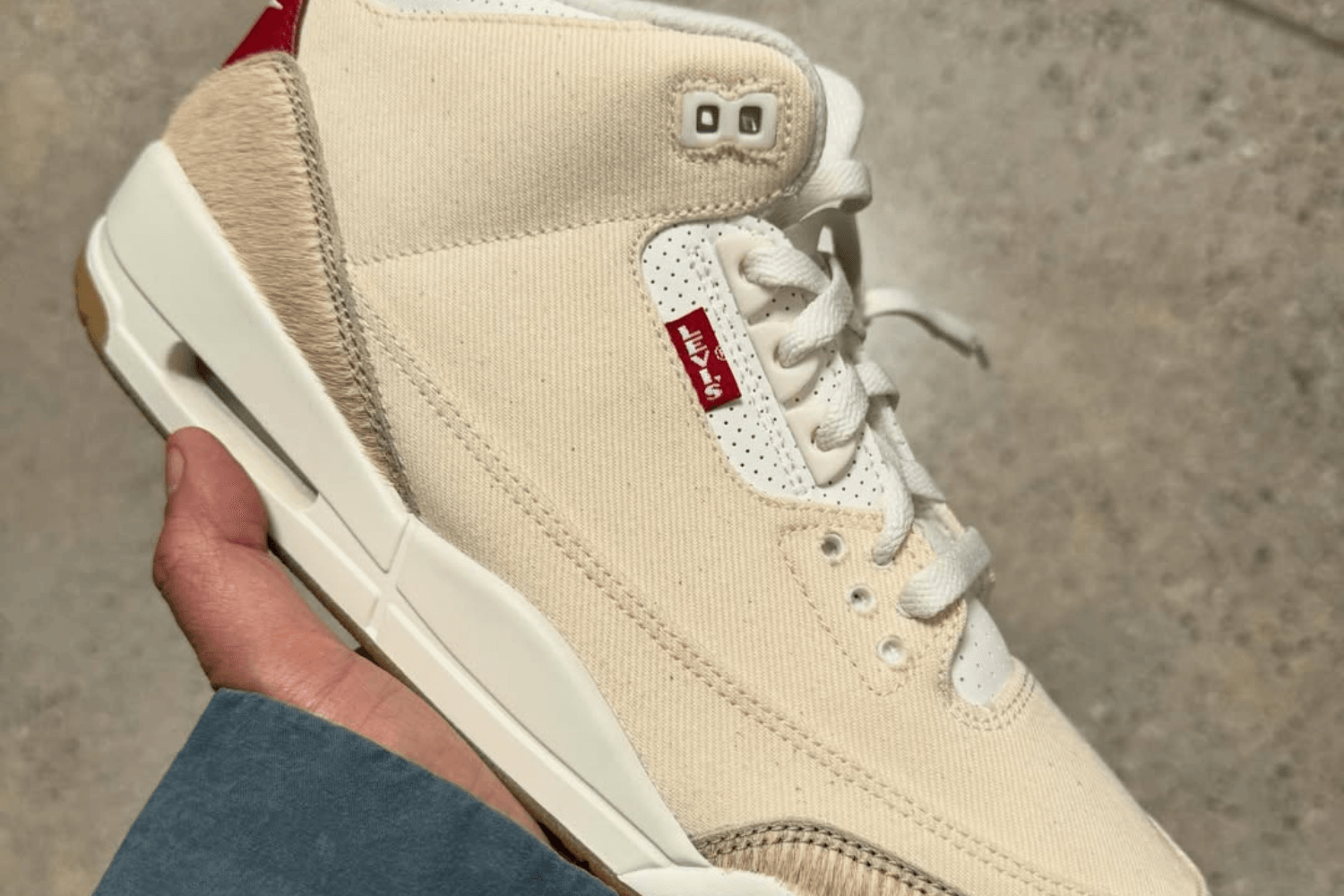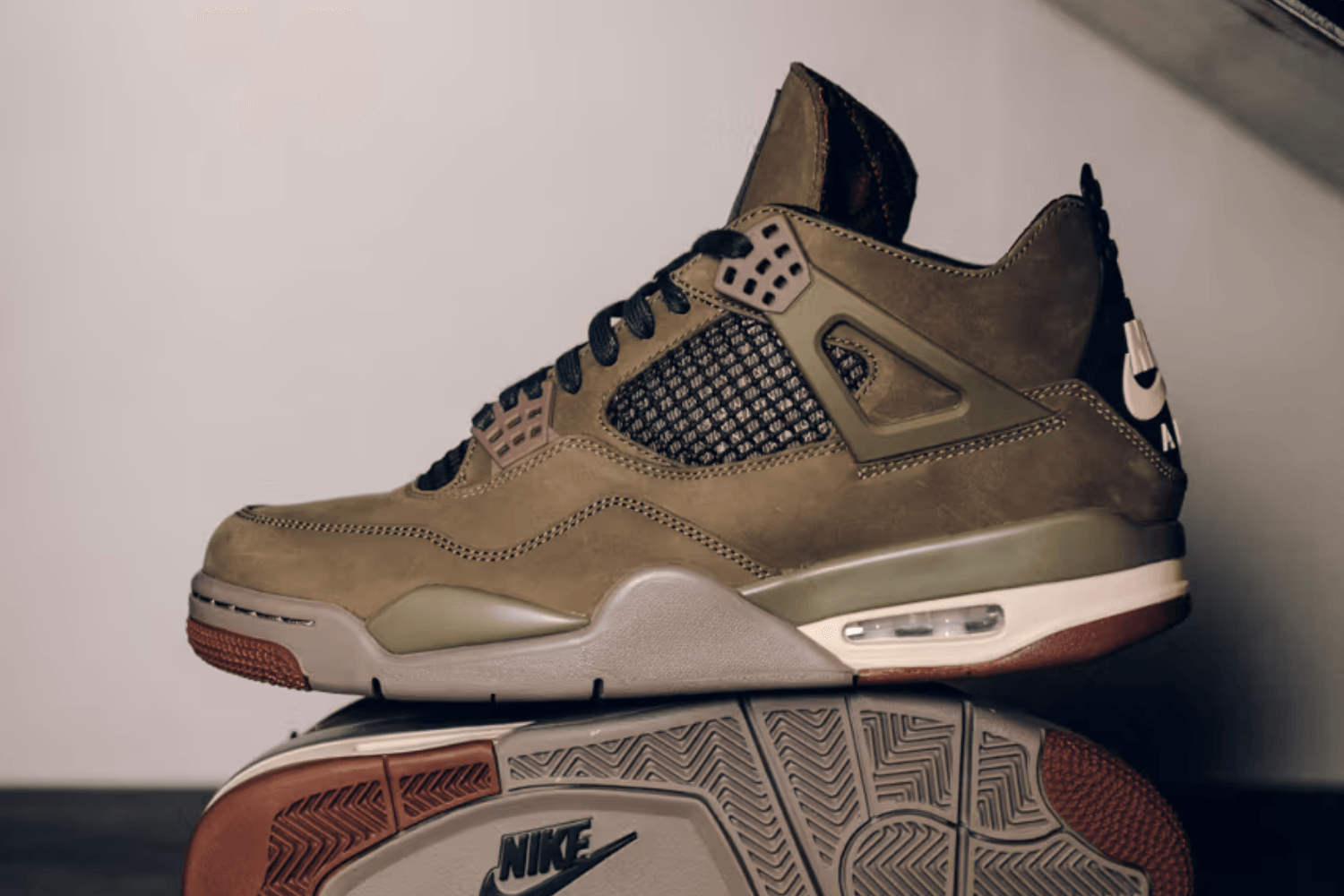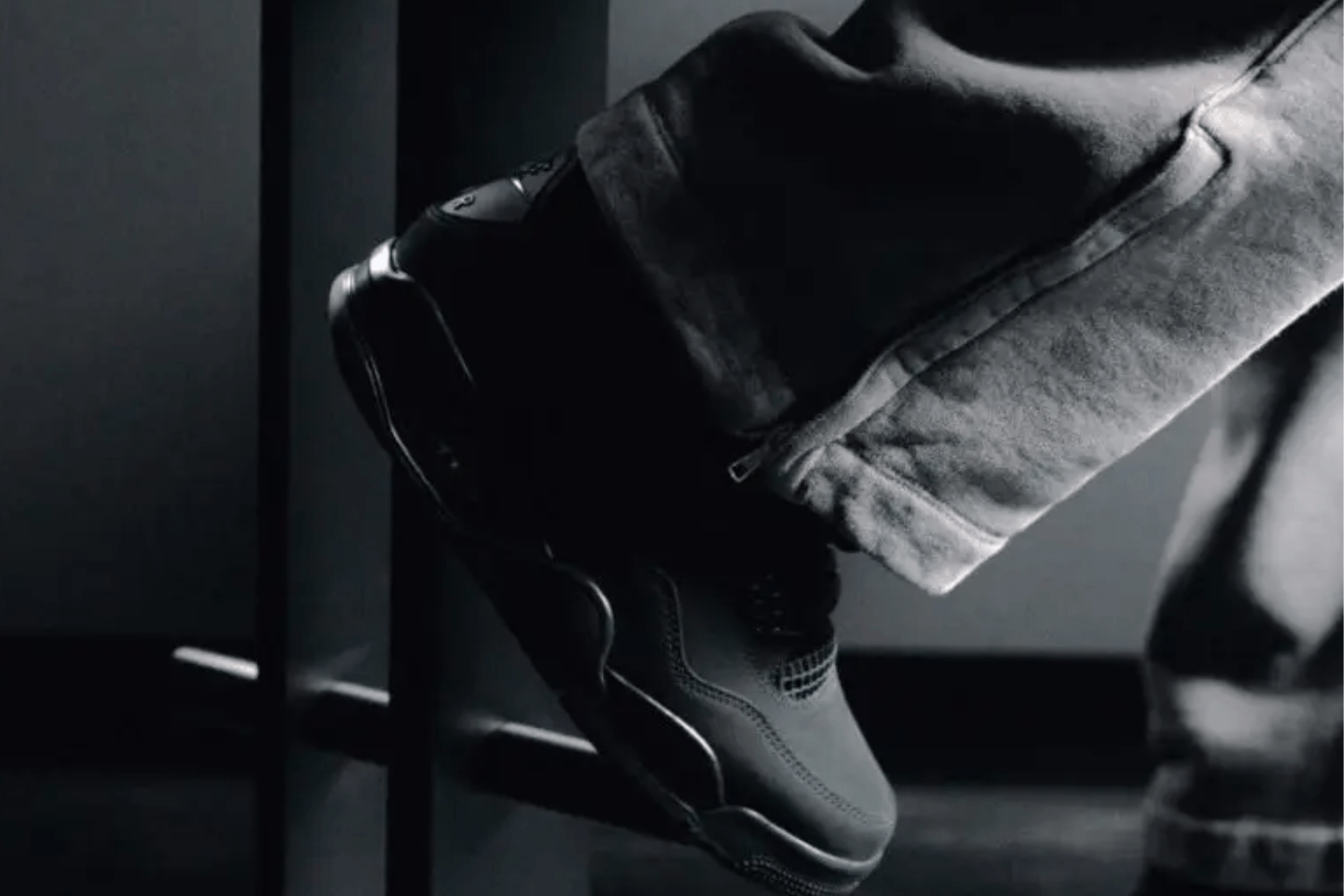The History of the Air Jordan 1
In 1984, Michael Jordan was selected as the third overall pick in the NBA Draft by the Chicago Bulls. He was given a 7-year contract worth $6 million. As one of the youngest players on the field, Nike was angling for a deal with him – a collaboration that years later would be crowned as one of the most successful collabs in the sports world.
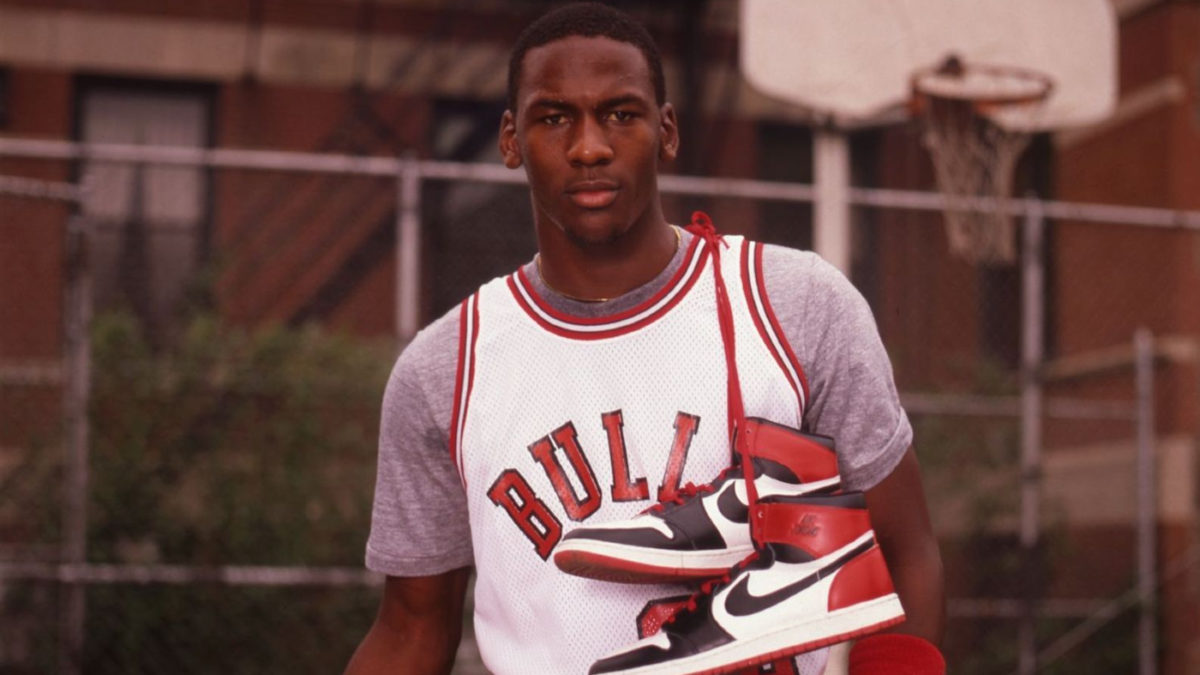
Nike offered the aspiring basketball star an annual sum of $500,000, and the opportunity to design a new silhouette of his own choosing, as well as royalties for every Jordan sneaker sold.
Despite Jordan actually preferring a deal with adidas or Converse, he ultimately ended up with Nike – the other brands’ offers of $100,000 a year didn’t even come close to the offer Nike made.
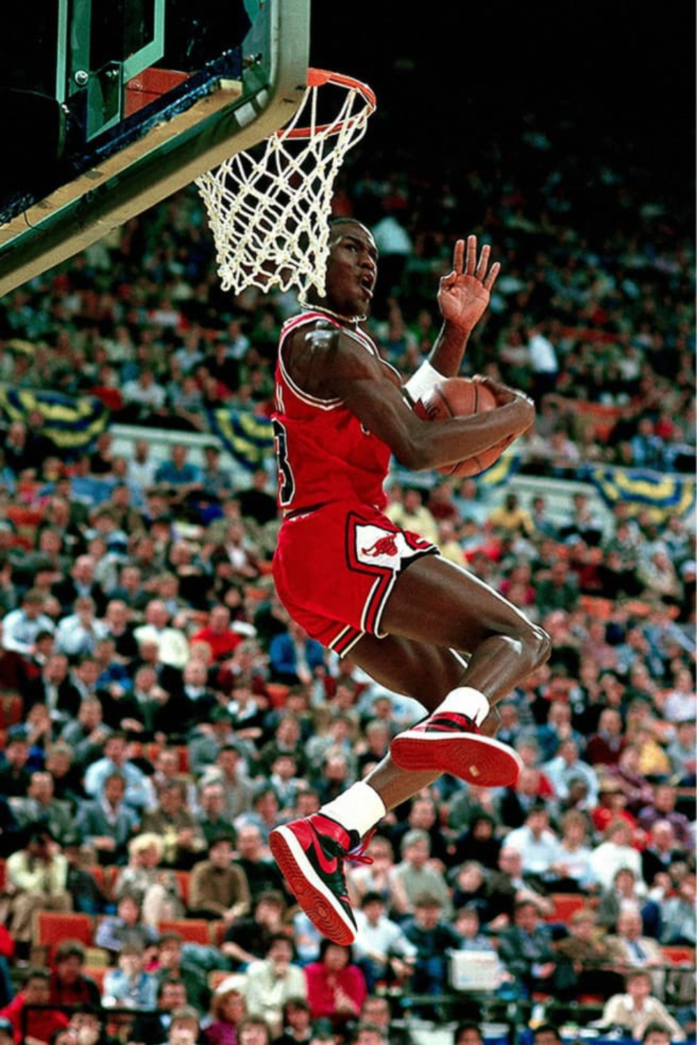
The first sneaker to emerge from this collaboration was the Air Jordan 1 High, designed by Peter Moore. It first appeared in the colorway ‘Bred’, combining the black and red of the Chicago Bulls uniform, and featured the now iconic ‘Wings’ logo.

One important colour missing from the sneaker was white – something the NBA felt was a must for basketball shoes worn during competition. The ‘Bred’ went against league rules and did not conform to the uniform policy in place at the time.
The NBA was so strict that for every game Michael wore the sneakers, he had to pay a fine of $5,000!
But this didn’t stop the star, who continued to wear the sneakers game after game. The ‘Bred’ earnt the nickname ‘Banned’, which is still linked to the colorway over forty years later.
Even though it later became clear that this story was about the Nike Air Ship, the predecessor of the AJ1, Nike capitalised on the rebellious image to increase the popularity of the model in an ingenious marketing ploy.
Alongside the ‘Bred’ colorway, the ‘Black Toe’ was also released in 1985 for the public. The ‘Chicago’ colorway followed in September of the same year.

Today, the Air Jordan 1 is a symbolic and historic part of sneaker culture. It’s frequently re-released in OG colorways like the ‘Royal’, staying relevant in the market, and limited editions have increased collector interest. It’s also become a high-fashion staple due to unique collaborations with Travis Scott, Off-White, Dior, and Fragment.
Air Jordan 1: Answering Your Questions
When was the Air Jordan 1 first released?
The AJ1 was first seen on November 17, 1984, on the feet of Michael Jordan on the NBA court. It was released to the general populace in April 1985, in the colorways ‘Bred’ and ‘Black Toe’.
Who designed the Air Jordan 1?
Nike designer Peter Moore designed the Air Jordan 1, and also went on to design the Air Jordan 2 in 1986. He designed the original ‘Wings’ logo which featured on both models.
Why was the Air Jordan 1 banned?
Because the ‘Bred’ colorway didn’t feature any white, it didn’t conform to league uniform rules, and therefore the NBA banned it. They charged Michael Jordan $5,000 every time he wore the sneakers on court, which he did numerous times.
How does the Air Jordan 1 fit?
All variations of the Air Jordan 1 are known to fit true to size, however if you have wider feet it’s recommended to size up half a size for these models, as they run narrow.
How do you clean Air Jordan 1?
An Air Jordan 1 is best cleaned by hand. For the best results, use one of the following combinations:
- 1 tablespoon baking soda, 1 tablespoon hydrogen peroxide, 1 teaspoon water (for white leather)
- 1 tablespoon lemon juice, 1 tablespoon baking soda, 1 tablespoon water (for white leather)
- 2 tablespoons baking soda, 1 tablespoon white vinegar, 1 teaspoon water (for all leather)
- 2 drops mild detergent/dish soap/sneaker cleaner, 1 cup/240ml warm water (for leather, patent leather, mesh and other fabrics)
Mix and apply to the sneaker with a toothbrush, and gently scrub. Wipe it off with a damp cloth and allow to air dry.
For suede or nubuck, use a suede brush to remove surface dirt, a suede or pencil eraser for scuffs, and white vinegar or suede cleaner for stains. Dip a microfibre cloth into the liquid and lightly dab it on, let dry, then brush it over.
For a smelly sneaker, you can sprinkle baking soda inside the shoe, then leave overnight. The powder will absorb moisture and neutralise the smell. Shake out the excess before wearing again. Alternatively, you can use silica gel or activated charcoal bags for the same results.
Laces can be cleaned with the same solutions and rinsed afterwards, or you can put white laces in a 1:5 bleach and water solution for a few minutes and then rinse thoroughly with clean water.
In addition, we do not recommend putting your shoes in the washing machine. Sneakers made of leather and suede can come out damaged. With shoes made of canvas or cotton, the risk is less, but the chance of damaged sneakers remains. So we recommend always washing your sneakers by hand. If you do put them in the washing machine, then place the shoes in an old pillowcase beforehand.
Are Air Jordan 1 waterproof?
The Air Jordan 1 is not waterproof. Most standard AJ1s are made from leather, which is slightly water-resistant but not waterproof. Suede and nubuck versions are more vulnerable to water, and can become stained or damaged when exposed.
However, there are GORE-TEX Air Jordan 1s available which are built for wet conditions and are waterproof.
How can I tell if an Air Jordan 1 is fake?
You don't recognise fake Air Jordans by one fixed indicator. In fact, it is a combination of indicators that vary from pair to pair. However, you can use these indicators to virtually determine whether a pair of AJ1s are genuine:
- Logo – the ‘Wings’ logo should be deeply embossed and crisp, not shallow, smudged, or glossy. The ‘Nike Air’ logo should have clean, properly spaced stitching, and not be off-centre, bold, or messy. The ‘Jumpman’ shouldn’t have poor stitching, weird proportions, or any other strange details.
- Swoosh – the Swoosh should be sharp, well-placed, and symmetrical on both sides. Watch out for oversized, misshapen, and misaligned Swooshes.
- Toebox – should be slightly curved and well-defined, not bulky, boxy, or overly rounded.
- Heel – the shape of the heel should be slightly curved and slim, not too straight or too wide, boxy, or chunky.
- Interior – check the inside tag has the correct fonts, date codes, and spacing. The print should be clean. Fakes can feature blurry, bold, or oversized text.
- Stitching – the stitching should be tight and even, with no loose threads, messy or inconsistent stitching.
- Material – real leather feels soft and slightly textured. Fakes may feel plastic, stiff, or strangely smooth or shiny.
- Smell – a real Air Jordan 1 should smell mildly like leather or glue. Fakes tend to have a strong chemical smell.
- Weight – fakes may feel lighter than a real pair due to poor-quality materials.
- Packaging – the box should be high-quality and sturdy, not flimsy or damaged. Check the style code matches an official listing. Extra laces are normally included neatly packaged in a separate bag.
How much does the Air Jordan 1 cost in retail?
On average, you can expect to pay anything between from €120 to €220 for a pair of Air Jordan 1. You’ll pay less for standard models with normal materials, but designs with high-quality materials, collaborations, limited editions and popular OG re-releases will cost you more.
Where can I buy Air Jordan 1s?
Do you have your eye on this model? With our sneaker search engine, you can browse the Air Jordan 1 at different retailers and at different prices. Our release calendar also keeps you up to date on AJ1 restocks and new releases!
Notable Air Jordan 1 Collaborations
Air Jordan 1 x Fragment Design
Released in 2014, this sneaker from Jordan Brand and Fragment Design is one of the most coveted Air Jordan collaborations of all time. The premium leather upper, that combined a Black, White and Royal Blue colour palette, reflected Fragment Design founder Hiroshi Fujiwara's signature minimalist approach.
The sneaker was an instant sellout when it dropped in extremely limited quantities, and prices for this colorway vary these days on reseller platforms such as StockX from €2,800 to €10,000.

Off-White x Air Jordan 1 OG 'Chicago' - The Ten
In 2017, Nike and Off-White came together for a unique collaboration called 'The Ten'. Created by designer Virgil Abloh, the Air Jordan 1 x Off-White had a deconstructed aesthetic that set it apart from other sneakers.
It had the classic 'Chicago' colorway and included semi-finished elements such as a Swoosh attached to the shoe with visible blue stitching, 'Air' on the midsole and an Off-White zip on the collar. The box that came with the sneakers was also deconstructed, with a black base and gold Jumpman logo on the inside, while the outside consisted of plain cardboard with the words 'Jumpman' printed on it.
The sneakers were in high demand and sold out quickly. It is no surprise that this shoe was so popular, with retail prices at StockX currently ranging from €5000 to €10,000.

Air Jordan 1 Variations
Over the years, the classic Air Jordan 1 has been joined by a number of different versions, expanding its accessibility.
Air Jordan 1 Mid
The AJ1 Mid was first seen in 2001, and is a more affordable version of the AJ1. It features the Jumpman logo on the tongue, and is more widely available than the high version, released frequently in numerous colorways. The height sits squarely between the High and Low versions.

Air Jordan 1 Low
The AJ1 Low actually debuted alongside the High in 1985, but it wasn’t very popular. It saw a resurgence in 2004 when Jordan modernised the design. Cut below the ankle, it contains less padding than the High or Mid, intended for more casual, everyday wear. It features the Jumpman logo on the tongue.
The AJ1 Low OG appeared again in 2015, bringing back the classic ‘Nike Air’ branding.

Air Jordan 1 High
First introduced in 2008, but becoming more common since 2013 as Jordan started releasing more non-OG retro colorways, the AJ1 High is slightly shorter than the High OG, and usually features the Jumpman logo on the tongue instead of ‘Nike Air’.
It tends to use different materials than the OG version, with variations in the padding, and is more commonly released than the High OG, therefore lowering the price slightly.

Popular Air Jordan 1 Colorways
Jordan have released many successful colorways on the AJ1, and these are some of the most popular and all-time favourites.
Air Jordan 1 High OG ’85 'Bred' | HV6674-067
The colorway that started it all. The black and red design remains one of the most sought-after Air Jordan 1s, and in January 2025, the '85 'Bred' was made available again.
Thick leather, retro stitching, and a more streamlined toe ensured the sneaker did justice to MJ's very first own shoe, with no unnecessary (and unneeded) extras.

Air Jordan 1 Retro 'Chicago' | 555088-101
Another OG colorway, the 'Chicago' was re-released in 2015 in its original form on the AJ1.
A white leather base and premium red leather overlays are rounded off with black accents on the collar, Swoosh, branding and laces. The traditional colours of the Chicago Bulls are well-represented on this classic colorway.

Air Jordan 1 High OG 'UNC' | 555088-117
Another re-release from 2015, the 'UNC' is inspired by Michael Jordan's college days at the University of North Carolina.
This AJ1 features a blue and white colorway, alongside signature branding details including the Nike Air logo on the tongue, and the 'Wings' on the collar. The outsole rounds out the design in the same powder blue colour as the upper.

Air Jordan 1 High OG 'Shattered Backboard' | 555088-005
This iconic colorway is inspired by MJ’s dunk that shattered a backboard during an exhibition game in Italy.
The 'Shattered Backboard' is constructed from tumbled leather, with a smooth white leather base and black and orange overlays. The orange rubber outsole and black Swoosh and branding rounds off the striking look.

Air Jordan 1 High OG 'Court Purple' | 555088-500
The 'Court Purple', originally from 2018, then re-released in 2020, is a unique, eye-catching colorway that was a big hit upon release.
It's constructed of a smooth white leather base, with Court Purple overlays, and black detailing from the Swoosh, branding, collar and laces.

Air Jordan 1 High 'Dark Mocha' | 555088-105
The 'Dark Mocha' is often compared to the Travis Scott AJ1 due to its similar colour, and it was popular with those who missed out on the more limited collab.
The silhouette has an off-white base with black overlays on the toe and eyestays. The black Swoosh and Wings logo contrast perfectly with the brown nubuck upper. The design is completed by the white nylon tongue and black outsole.

Air Jordan 1 High 'Shadow 2.0' | 555088-035
With the hugely popular Bred and Royal Blue colorways, it is easy to overlook the fifth famous colorway of the AJ1's original shoe: the melancholic black-grey 'Shadow'.
Even after 35 years, this is still one of the best Air Jordan there has ever been, even if it doesn't get as much attention as the other classics.

Air Jordan 1 High OG 'Black Toe Reimagined' | DZ5485-106
The OG 'Black Toe' is still considered one of the model's most recognisable and beloved colorways. Despite the fact that he rarely wore them on the field, the Black Toe was worn by Michael Jordan during the photo shoot that was the model for the now iconic Jumpman symbol.
The 'Black Toe Reimagined' remains mostly true to the original, although subtle changes include swapping out the traditional 'Wings' logo for 'Air Jordan' text.

For more FAQs on your favourite sneaker models, visit the Sneaker FAQ page.



